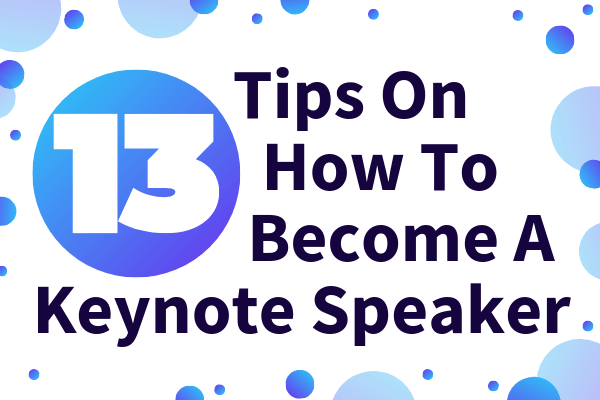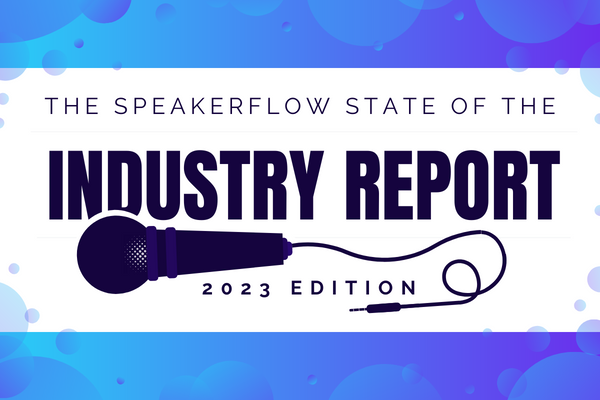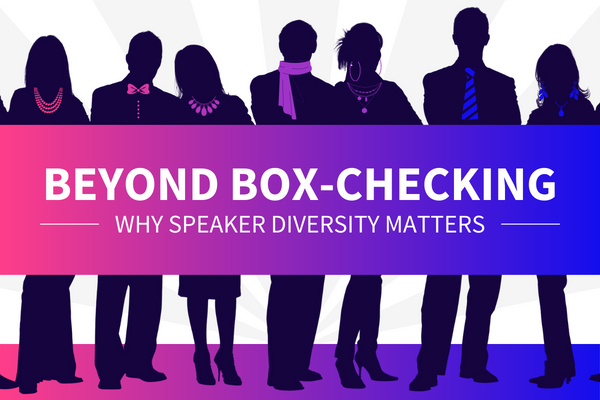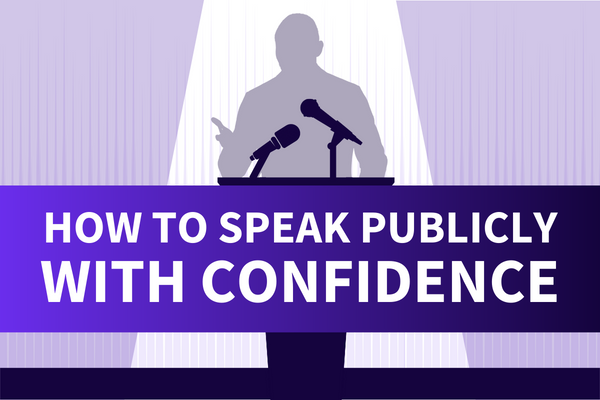It’s no secret that the speaking industry is growing year over year, especially as experts across professions turn to speaking as a part-time source of income. Because of this, the industry as a whole is becoming more competitive. More people in the “speaking pool,” so to speak, means more speaker options for event planners. Not only is this true for small events, such as elementary school guest speakers. It’s also true if you’re an emcee, breakout speaker, or keynote speaker. This can mean new voices are heard and given the attention they deserve. However, it also begs the question, “How can I gain that attention? How can I stand out from the crowd?”
One of the ways in which you, as a professional speaker, can stand out is by focusing more on keynote speaking, specifically. After all, because keynotes are required to make an impact on the event attendees, they tend to pay more. Additionally, demonstrating that you are keynote speaker material is another way to showcase your skills. So, if you haven’t considered keynoting yet, now is the time to step up to the plate. If you already are a keynote speaker, all the more reason to refresh your approach and level up your skills.
In light of these considerations, that’s what this guide is intended to cover. Below, we’ll break down 13 of the best tasks to tackle, if you want to become a killer keynote speaker. We’ll also address a few common questions related to keynote speaking. That way, you can be on your way to a prestigious keynote speech in no time.
- 1. Make sure your speaking business is rock solid.
- 2. Refine your public speaking skills and presentation style.
- 3. Define which industries you want to focus on.
- 4. Attend conferences and events in your focus industry.
- 5. Research, research, research.
- 6. Outline key industry issues, and stay up-to-date on them.
- 7. Tailor your digital presence to your focus industry’s challenges.
- 8. If you can, collaborate with other industry experts.
- 9. Keep your presentation simple.
- 10. Leave your assumptions at the door, when you present.
- 11. Make sure the audience can take a piece of your speech with them when they leave.
- 12. Stay humble, no matter how quickly you grow as a keynote speaker.
- 13. Be yourself!
- Other Frequently Asked Questions
1. Make sure your speaking business is rock solid.
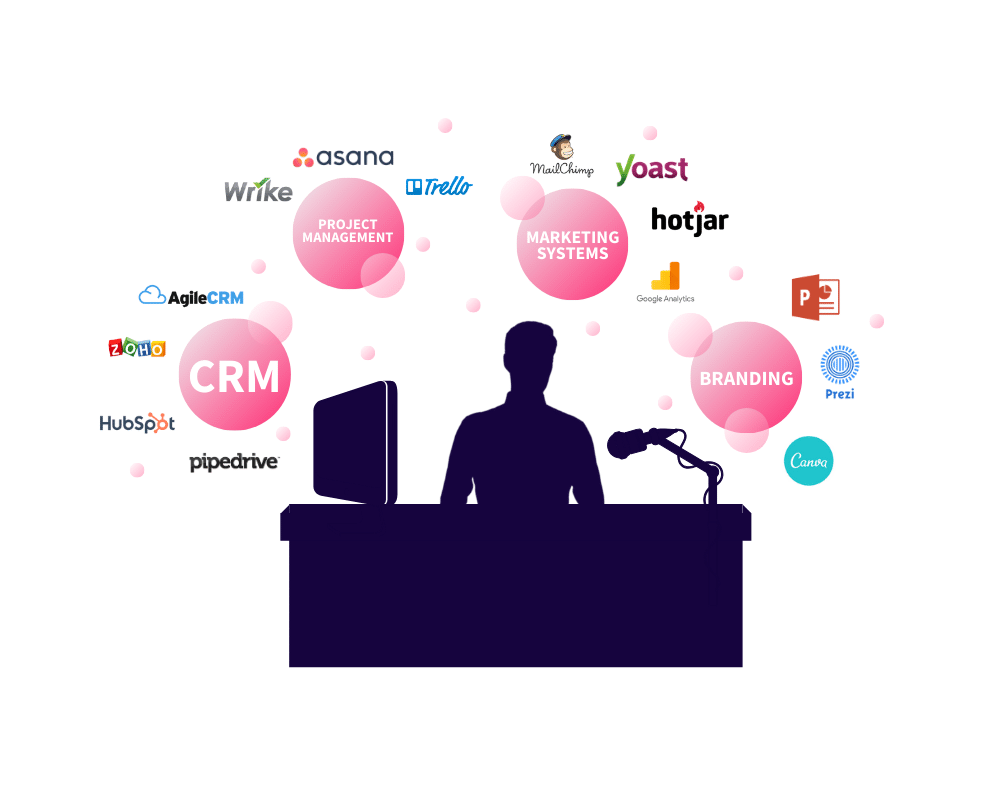
Before you can focus on keynote speaking, as a style of presenting, you need to have your business locked down. To put it bluntly, you need to have your speaking business sh*t together. That means that from your sales process to your marketing efforts, you should be as organized as possible. Although it may sound like I’m exaggerating the importance of this, it’s true! Take it from consultant and speaker Somers White. With almost 40 years of experience in the industry, Somers says, “90% of how well the talk will go is determined before the speaker steps on the platform.” In other words, the more organized and prepared you can be on the back end, the more smoothly your gigs will go.
At SpeakerFlow, maximizing speaking business processes is what we do, so there are a few key things we’ve learned. Above all, when solidifying your speaking business, invest in quality tools and systems. Need a place to keep track of your bios, headshots, and one sheet? Sign up for a cloud storage platform like Google Drive or Dropbox. Looking for a way to track all of your ongoing tasks and sales? Sign up for a customer relationship manager (CRM), such as AgileCRM, HubSpot, or the SpeakerFlow CRM. For each part of a speaking business – sales, operations, and marketing – there already exist systems to help you effectively stay on top of it all. Check out our list of the seven systems you need to run a speaking business or our podcast with speaker coach Jane Atkinson to learn more.
2. Refine your public speaking skills and presentation style.

After strengthening your speaking business, the next step to becoming a keynote speaker is establishing your style. From your visual brand to your cadence when you speak, every presentation imparts a ton of information about you in addition to your message. Although this can be intimidating for new keynote speakers, it’s also an amazing tool. Through your non-verbal actions, you can not only reinforce your points during the event. You can also ensure that members of the audience retain them when it’s over.
For example, one of our good friends and clients is Joe Curcillo. A former lawyer turned mentalist and speaker, Joe includes in his keynotes his unique approach to mentalism and how it can be used to unite teams. He’s also not shy with jokes about his mob boss-like appearance. If you’ve ever run into Joe yourself, at a National Speakers Association (NSA) event perhaps, you know these are especially humorous because they are in such stark contrast to his laid-back nature.
Like Joe, before becoming a keynote speaker, outline how you would like to be remembered and build your presentation around that. For him, he’s remembered as an approachable and remarkably humble person despite his skills. Both of these attributes make his audiences more than willing to heed his advice and encouragement and make him hard to forget. In the same way, define your style and draft a presentation to match. Then practice, practice, practice until your speaking skills are as exceptional as you are.
3. Define which industries you want to focus on.
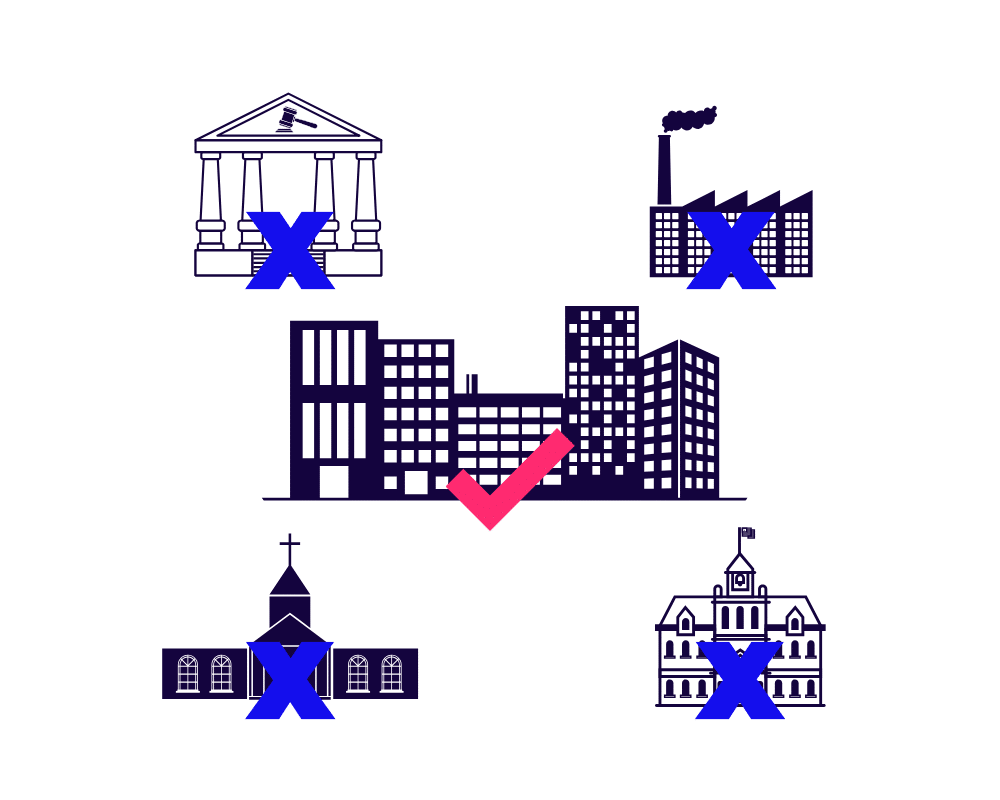
Along with choosing your style as a keynote speaker, it’s also imperative that you choose where to focus. As with any job, trying to focus on too many things at once dilutes your talent across each task. In the professional speaking profession, this comes into play namely when choosing a focus industry. After all, the more concentrated your attention is, the more customized your message and presentation can be. Because of this, your impact is greater.
For example, let’s look at Alex. As a new speaker, Alex’s primary message to his audiences is to embrace change. As a keynote speaker, he also covers the steps necessary to gracefully handle changes and come out on the other side of them profitable and prepared. Although this message can apply to almost any industry, Alex has chosen to focus on the software as a service (SAAS) industry. Because digital products are constantly changing in order to outrank their competition, Alex’s message is a perfect fit for this. Additionally, by focusing on a single industry, he can more efficiently work his way up the ladder within it. Then, after speaking for the largest SAAS companies in the industry, he can broaden his reach into other avenues.
In the same way, as you choose an industry, start with your message. If you had to summarize your value in a single sentence, which workforce would benefit the most from hearing it? On the flip side, look at your experience. In what industry were you working when you learned the message you want to share? Start in one of these two industries and work your way up from there. Plus, if you’re not sure where to start, feel free to shoot us an email, too! We’re always happy to help you pin it down. 👍
4. Attend conferences and events in your focus industry.

The next step in becoming a keynote speaker, after choosing a focus industry, is attending events within that industry. We’re talking (no pun intended) conferences, seminars, one-off events. Regardless of the kind of event you attend, the goals remain the same. The first goal is to keep an eye on your competition. We’ve all heard the phrase, “Keep your friends close and your enemies closer.” Keynote speakers are no exception to this, so it’s important that you see who you’re competing against. That way, you can mimic techniques (in speaking and speaker sales) that are working and improve on practices that aren’t, making you stand out from the crowd from the first event you book.
The second goal, when studying conferences and events in your industry, is simply to improve your knowledge. Every audience member is more likely to listen if they can see that you understand their line of work. That means that the more you can know about the industry, the better. Not only will this demonstrate that you have done your homework and so are justified in your suggested improvements. It also shows that you care! If your audience gets the idea that you are purely there for the money, that you aren’t truly passionate about the industry enough to dig into it, they won’t listen. Obviously, that’s the last thing we want.
Lastly, your third goal is to make connections at industry events. Many of the event attendees could be major players in the industry, and you may not even know. Attending other speakers’ keynotes is an easy way to get your foot in the door with such people. Plus, the more and the deeper the relationships you make in your industry, the more clients will refer you.
5. Research, research, research.
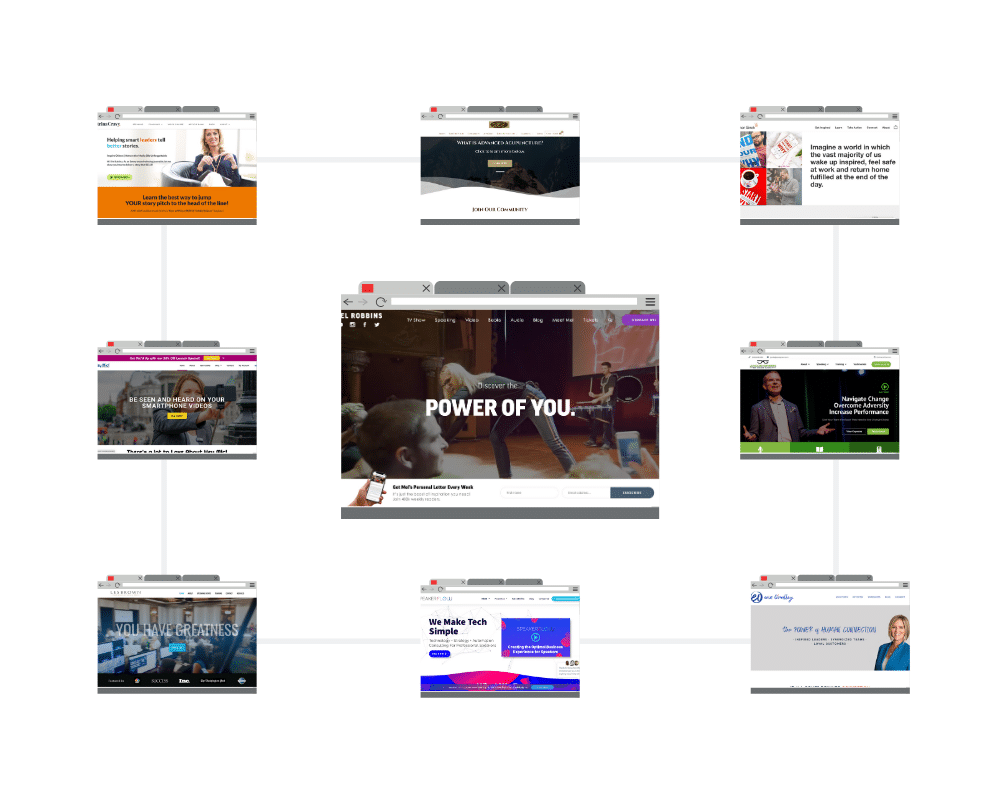
This one is a tried and true tactic in any job, including work as a keynote speaker: research, research, research. On top of attending industry events, it’s important to dig into current events. This includes recently released research or papers, announcements of mergers or expansions, or changes within a large company in the industry. In short, you want to know everything there is to know about your industry, in the past and as it exists now. Additionally, you want to know what aspects of the industry are changing, so you can change with them.
But, besides industry information, again, it’s also important to research existing keynote speakers in the industry. When it comes to branding, speaking, and selling in the speaking industry, some of the best tips and tricks come from your competition. Think of a major player in your focus industry. What information do they include on their website? What kind of language do they use, formal or more informal? Are their speeches persuasive or geared more towards informing their audience? These are just a few of the key questions to ask yourself ask you look as a keynote speaker you admire. After all, someday, that could be you on that stage in their place. It just depends on the amount of research you do, the insights you gain from it, and whether or not you can turn those insights into action.
6. Outline key industry issues, and stay up-to-date on them.
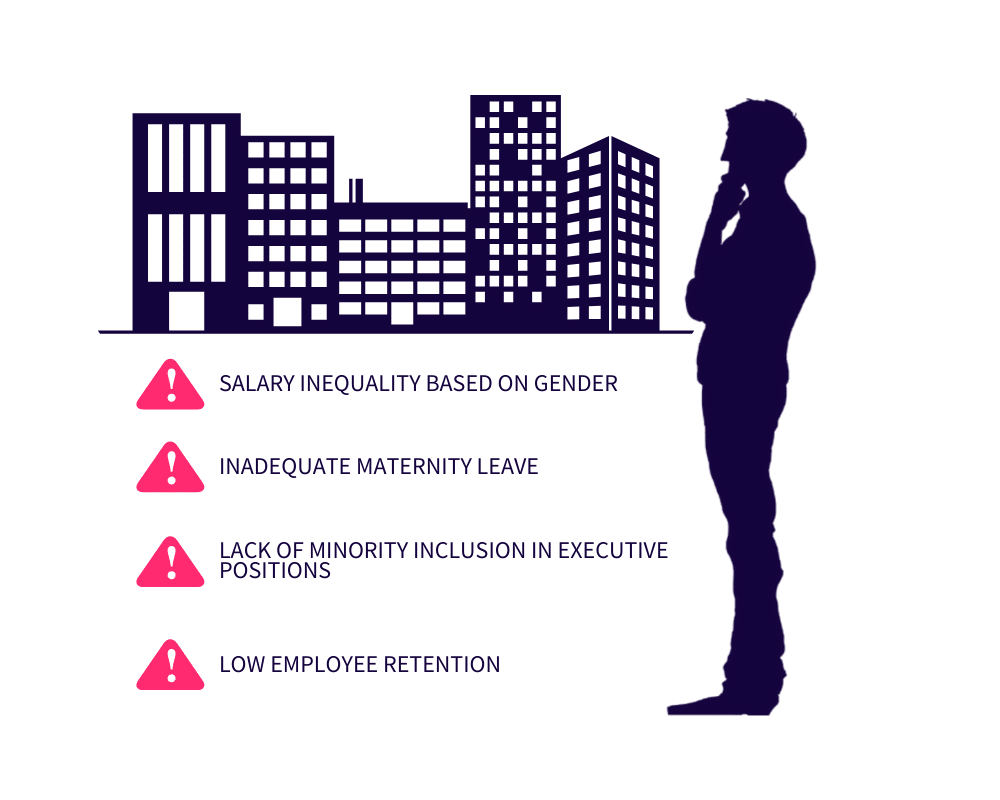
In doing your research, it’s also important to note key industry issues. Although in some industries there are many to face, each one is an opportunity. As a keynote speaker, each industry challenge is a chance for you to step in and inspire change. By understanding these issues, you also provide an additional way for the audience to relate to you. This is especially important to note if you are in front of a room in which you don’t fit in.
Let’s look at our example, Alex. Within the SAAS industry, Alex has identified some common issues facing corporate employees. These include exclusion of women from executive roles and lack of paid time maternity leave. As a man, these don’t directly affect Alex, so it’s a bit harder for him to show female audiences that he understands. However, by identifying these issues, he gives credit to the feelings of those affected. Then, by outlining the ripple effect each problem has, he shows that he sees the big picture. He also indicates how beneficial it would be to tackle them. Finally, by this point in his presentation, the audience can see that he cares and that he knows his stuff. These combine to not only win Alex’s audience over. It also makes him memorable as a speaker, an industry expert, and someone that truly cared about it all. Win, win, win!
In this way, when you’re preparing to become a keynote speaker, it is important that you provide the same level of care within your focus industry. What may seem tedious initially can win over key industry players. Ultimately, this is yet another part of the system you’re building to attract speaking gigs. Really, the less work you have to do down the line to get gigs, the better, right?
[hubspot type=cta portal=5815852 id=7cff95fd-a207-455b-aed4-9364f424f159]
7. Tailor your digital presence to your focus industry’s challenges.
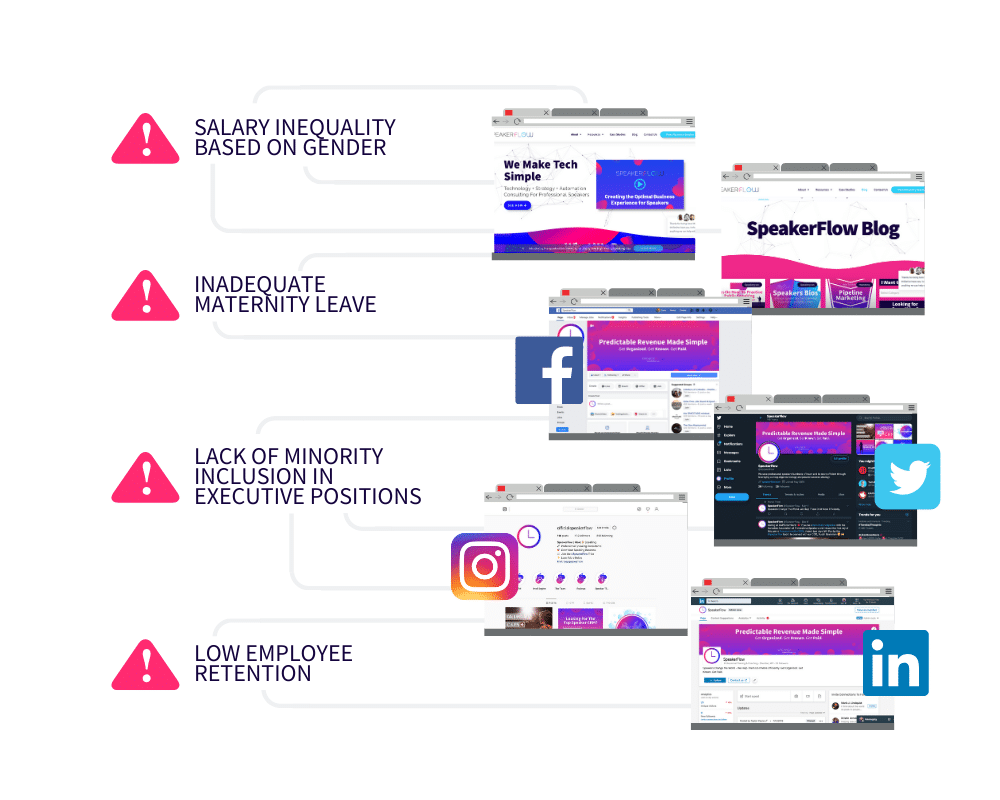
The next piece of the keynote speaker puzzle builds directly off of everything we’ve already covered, especially the last four points. Once you have identified your focus industry and it’s challenges, it’s time to adapt. Look at your speaker website as it exists right now, and ask yourself, “Does this show my expertise?” Then do the same on your blog and social media profiles. Your digital presence, as a whole, should clearly show which industry you work in and how you directly benefit it.
It should also demonstrate your credibility. On your website and social profiles, include testimonials from past clients in your industry. Share links from other speakers and industry leaders to show your authority and engagement. In short, take an active part in your industry everywhere you appear online. Event planners should be able to land on your Facebook page, Twitter account, or website and see your reputation immediately. That way, they’ll trust you and your knowledge, even before they book that discovery call with you.
Lastly, don’t forget to create your own original content! Sharing others’ content online is great, but creating your own is better. By compiling your own research and arguments, within your industry, you once again show your skill and care for it. See what I mean, when I talk about a system for streamlining the gig-finding process? Every way that you create authority and show care ultimately compounds over time, bringing more referrals your way in the future.
8. If you can, collaborate with other industry experts.

Moving on to number eight of our 13 tips for becoming a keynote speaker: collaboration. Although you’re coming into your focus industry with newfound knowledge and passion, a little more manpower never hurts. This doesn’t just include speakers already in the industry, either. Reach out to professors, low-level employees, and executives with a request for a virtual coffee or phone call. Even better, visit offices and workplaces in the industry, if you’re able to, for a in-person experience of industry issues. The more you can get on the ground with audience members, the better you can understand and relate to them.
If you’re unsure how to find individuals in these positions, LinkedIn is an easy way to search by job title. That way, you can quickly and easily find executives or employees at a star company in the industry. Additionally, for searching within an industry (or when searching for event planners later), the Speaker Intel Engine is another awesome tool. Built by sales expert Sam Richter, who is himself a speaker, the entire app is designed to simplify the search process. That way, you can find people, connect with them, and get to work as quickly and easily as possible.
9. Keep your presentation simple.
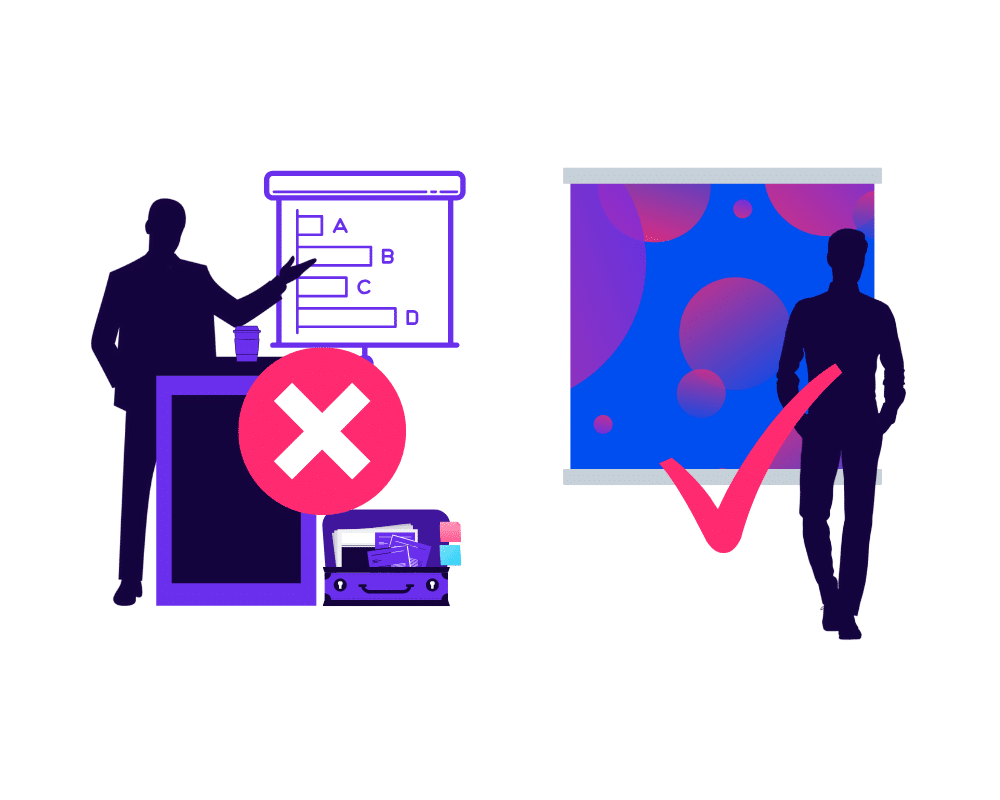
Step nine is one that speakers site time and time again as part of what makes a keynote speaker great. I’m talking about their presentation. All in all, your presentation should convey your message and engage the audience. However, it’s important to remember that your visual aids are exactly that: aids! You and the message(s) you share are the focal point to the keynote. In light of that, your presentation should be a balance of engaging yet simple. After all, you want the audience to look at your visual aids, but then you want them to return their attention to you.
The same is true when it comes to actions and props. Colette Carlson, for example, is a hilarious speaker that often incorporates performance into her speeches. From short skits to intermittent jokes to break the tension, she is a perfect example of balancing a unique presentation with a serious message. In your own work as a keynote speaker, this same balance should also be present and your visual aids kept simple. That way, you keep people engaged but you also make sure they don’t forget what you talked about.
10. Leave your assumptions at the door, when you present.
This one is an obvious one, so I’ll keep it short and sweet. Every time you enter a new room, as a keynote speaker, your audience is different. Jokes that have gone over well with crowds in the past may not always work. The power could go out or your microphone could die. While it’s important to not assume the worst will happen, don’t assume the best either. Just remember why you are there, give it your all, and, if you need to make adjustments for your audience, play it by ear. You’ve practiced, researched, and mastered your industry to get to this point. Trust that you know your stuff.
11. Make sure the audience can take a piece of your speech with them when they leave.

After your keynote is over, the next step is making sure that the members of your audience hold onto your message. In part, this is facilitated by a well-crafted speech. However, you can also contribute by providing physical materials for the audience. Notecards with your main points, copies of your book – you name it. Any physical summary of your message is another way for them to remember you after your speech ends. Plus, it keeps you front and center in their lives, so that, the next time they’re looking for a keynote speaker, you come to mind.
Providing books, merchandise, or summary cards for the audience is also a useful way to argue for a higher speaking fee. Just as physical gifts are good for your image, they’re also good for the event organizer. After all, they coordinated the event in the hopes that the impact would outlast your speech. This is a way for them to make sure that happens.
12. Stay humble, no matter how quickly you grow as a keynote speaker.
Almost done – I promise! Tip number 12 of becoming a keynote speaker is another tested truth: stay humble. Working hard and following this process will pay off in time. However, even if you skyrocket to the top of your industry, remember where you are right now. You might get to the top because of your passion and dedication. But continuing to keep tabs on current industry events and learning all that you can is what will keep you at the top.
13. Be yourself!

Last but not least, don’t forget to stay true to who you are. A keynote speaker is just a person on a stage spouting facts unless you bring some individuality to it. Canadian speaker Wayne Lee, for example, is all about one inspiring message. In his words, “When you act as if you are already that thing that you want to become, magic happens.” Ordinarily, while that is a great message, it wouldn’t seem terribly exceptional. However, in Wayne’s presentations, actual magic does happen. A master hypnotist, each speech is a unique show of magic and motivation, making his work all the more memorable.
Likewise, behind your own speaking business, you have loads of experiences. You might be an artist, musician, singer, or comedian. Whatever else it is that you are passionate about, in addition to speaking, make it a part of your work and the audience (and event planners) will love and remember you for it. 💕
Other Frequently Asked Questions
We’ve outlined the thirteen best practices for becoming a keynote speaker, but there are definitely some questions we glossed over. From the importance of keynote speakers to the length of the speech itself, this is just the tip of the iceberg. That said, below are four of the most common questions we hear, when it comes to keynote speakers. Of course, stay tuned for another blog in the future, too, so we can knock out a few more details. 👌
What is the difference between a guest speaker and a keynote speaker?
A guest speaker is a professional speaker hired to present at an event. Guest speakers are not the host of the event themselves but participate in order to provide added value and/or entertainment. A keynote speaker is similar to a guest speaker in that they provide additional value to the event, too. However, a keynote speaker typically opens or closes the event. Because of this, their speech has to present the central theme of the event as well as engage, motivate, and sometimes educate the audience. As a result, keynote speakers are generally more expensive to hire than guest speakers.
What is the role of a keynote speaker?

A keynote speaker is hired primarily to open or close an event. As the opener, the keynote speaker introduces the theme of the event and excites the audience about it. In other words, their job is to get everyone on the same page and pumped. On the other hand, as the closer, the keynote speaker rounds out the event on a positive note. He or she is in charge of making sure the audience leaves the event reminded of the theme and what they learned. Ideally, they also leave confident that the event was a success.
How long is a keynote speech?
The length of keynote speeches varies, but, in a perfect world, it’s anywhere from 60-90 minutes. Ultimately, the length is up to you, as the keynote speaker, and the event planner. As with any speech, it should be long enough to get your point across without being rushed. It also shouldn’t be so long that you lose the audience’s attention.
How much do keynote speakers make?
On average, keynote speakers charge $10,000-20,000, depending on their reputation or expertise. For new keynote speakers, the fee is typically on the smaller side, unless they are already well-known or highly accredited. We typically recommend that you start at $10,000 and work with event planners to find a sweet spot, as you initially prospect for keynote speaking gigs. Then, work your price up from there.


